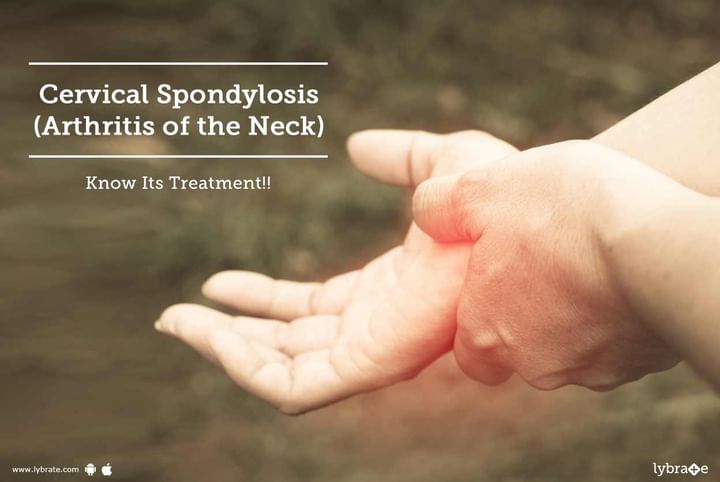Cervical Spondylosis (Arthritis of the Neck) - Know Its Treatment!!
Cervical spondylosis is fast becoming the bane of modern life. An age-related wear and tear problem affecting the spinal discs in your neck, cervical spondylosis is increasingly affecting the young because of the use of cell phones, laptops and the like.
Cervical spondylosis is a general term used to define shrinkage of discs in between vertebrae in the neck region. Along with disc degeneration, bony projections also form in the area and are called bone spurs.
Other causes of cervical spondylosis are dehydrated discs. Discs are thick, pad-like cushions in between vertebrae that act as shock absorbers. They are made of a gel- like material that can dry over time. This causes the spinal vertebrae to rub together causing pain. The discs also crack which allows the internal gel-like material to spill out and impinge on spinal nerves causing symptoms.
There is a narrowing of the space required by the spinal cord and nerves that emanate in the upper spine to go to various parts of the body. Pinching of these nerves can cause alarming symptoms like:
- Numbness and weakness in your arms, hands, legs and feet
- Lack of coordination and difficulty in walking
- Loss of bladder or bowel movement
- Stiffness and pain in neck
Treatment and management
Usually, cervical spondylosis doesn’t cause any symptoms. But when you start experiencing pain, stiffness and weakness of muscles, it’s best to go to a doctor who will diagnose the problem and then treat it.
Treatment for cervical spondylosis depends on the severity of your symptoms. Its goal is to get rid of pain, allow you to carry on your daily activities and prevent any permanent damage to your spinal cord and nerves.
Medicines
- Anti-inflammatory drugs are prescribed to reduce pain and inflammation. Example Ibuprofen.
- Corticosteroids are oral medications to get rid of the severe pain. If these don’t work, your doctor can suggest steroid injections.
- Muscle relaxants medicines relax the muscles in the upper part of the spine and help in curing neck pain and stiffness
- Anti-seizure medications are also prescribed to dull the pain of damaged nerves in the spine. These include epilepsy medications, such as gabapentin and pregabalin.
- Non surgical treatments are usually very effective in treating cervical spondylosis and surgery is usually not required. Physiotherapy is a bulwark for patients as it helps manage the condition very well.
- Neck exercises that help stretch and strengthen muscles in your neck and shoulders can help manage debilitating symptoms of cervical spondylosis.
- Few patients also benefit from traction, which can help provide more space for nerve roots within the spine.
Surgery
- Surgery is the last resort for treating cervical spondylosis.
- It is suggested when non-surgical treatments fail and the pain and neurological signs such as weakness in your arms or legs get worse.
- It is done to create more room for your spinal cord and nerve roots.
Cervical spondylosis surgery typically involves removing:
- Herniated disk
- Bone spurs
- Part of a vertebra.
If you wish to discuss about any specific problem, you can consult a Physiotherapist.



+1.svg)
